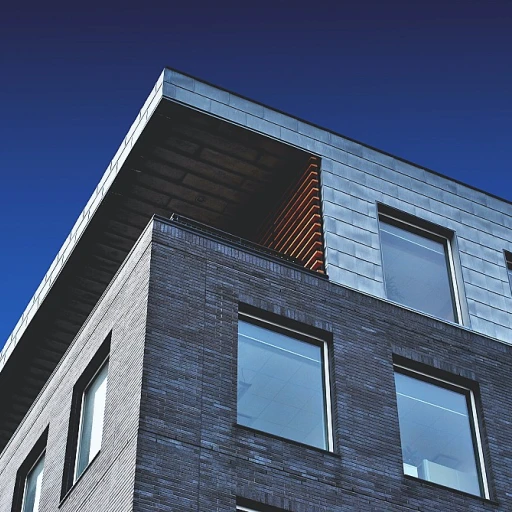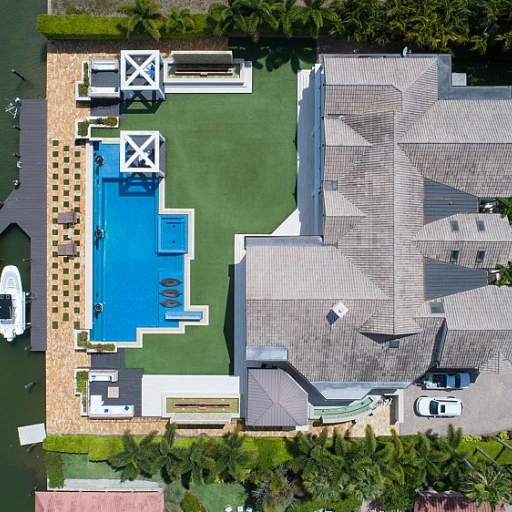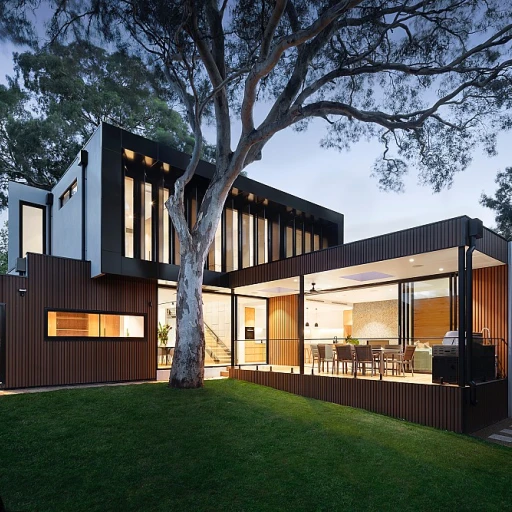
The Fusion of Fine Art and Luxury Living: Crafting Cultural Status
Enhancing the Cultural Quotient of Luxury Estates Through Art
The enigmatic charm of fine art is a universally acknowledged symbol of opulence and exclusivity. The presence of an in-house gallery in a luxury estate is more than just a decorative enhancement; it acts as a beacon of cultural status, attracting a discerning clientele. Recent statistics indicate that luxury properties boasting significant art collections can see an increase in value, often aligning with the investment and prestige of the acquisition. With renowned institutions like The Louvre and The Met seeing record visitor numbers pre-pandemic, a staggering 10.2 and 7 million respectively, it’s clear the appetite for art is reflective of a broader trend of cultural appreciation.
Crafting Spaces that Speak the Language of Art
Designing a space for art within the confines of a luxury property requires a harmonious blend of aesthetics and architecture. It's about creating an environment that both preserves and accentuates the art, instilling a narrative that complements the estate's unique character. The global market for home décor was valued at $663.1 billion in 2018 and is anticipated to reach $838.6 billion by 2027, signaling the importance homeowners place on the aesthetics of their living spaces. Integrating art into this equation not only heightens the visual appeal but can influence the estate’s market perception and value.
Art as a Cornerstone of Distinction and Heritage
For many exclusive estate owners, the inclusion of fine art is a deliberate decision to embed an element of distinction and heritage within their domain. As per a report by Deloitte and ArtTactic, 76% of art collectors stated art's aesthetic value was their primary reason for collecting, and this passion can effortlessly transition into a curated in-house gallery. Such a collection not only embodies their personal taste but can also serve as a historical ledger, chronicling art through the ages and projecting the owner's cultural literacy to the world.
Designing the Perfect In-House Gallery: A Marriage of Aesthetics and Architecture
Harmonizing Space and Vision: Crafting Your Personal Gallery
When it comes to integrating an in-house gallery within your luxury estate, the confluence of art and living spaces is paramount for crafting cultural status. An exclusive estate isn't just a home; it's a sanctuary where aesthetics and architecture meet to tell a story. Statistically, properties with bespoke art galleries can see an increase in value, not just economically but also in terms of cultural capital. As reported in a recent analysis, high-net-worth individuals view art and collectibles as a way to pass on wealth and culture, highlighting the importance of the synergy between space and curated art pieces.
Selecting the Right Art: Curating a Collection That Reflects Your Identity
In constructing your in-house gallery, selecting art pieces is not merely about economic investment but also about finding works that resonate with your personal taste and the architectural elements of your estate. Art advisors often emphasize the significance of a gallery that acts as a reflection of the homeowner's identity, embodying a unique story or theme. To add a personal touch to your estate's gallery, consider incorporating works from different periods, showcasing a sophisticated timeline of art that could become a talking point for visitors and connoisseurs alike.
Integrating Art with Interiors: Ensuring Aesthetic Continuity
Creating a seamless artistic experience involves more than hanging paintings on a wall; it's about ensuring a sense of continuity and flow with the estate’s interiors. Renowned architects and interior designers often quote that the interplay of light, space, and art is critical in enhancing the overall ambiance of a luxury estate. For example, using architectural elements such as natural light sources and minimalist design can help to keep the focus on the art, while also maintaining the harmony between living quarters and exhibition space.
Exclusive Accents: Diversifying with Sculptures and Installations
While paintings and photographs are common in private galleries, the inclusion of sculptures and installations can significantly elevate an estate’s character. Recent trends in luxury living suggest that diverging from the conventional can set an estate apart. By integrating a variety of art forms, estates can offer a dynamic and immersive experience. Moreover, sculptures and large installations can serve as centrepieces that draw attention and provoke conversation, contributing to the home's uniqueness and artistic stature.
Art Meets Architecture: Enlisting Expert Collaboration for Gallery Spaces
When integrating an in-house gallery into the fabric of your estate, collaboration with experts can facilitate a melding of artistic vision with architectural integrity. Art consultants and architects can advice on how to create a space that complements both the art and the existing design of the home. For instance, how the natural progression of rooms can lead to a curated art space, building anticipation and narrative as one moves through the estate.
In the vein of curating unique experiences within an estate, discerning owners might also appreciate the nuances of rescuing the lost art of the wine cellar. Like fine art, a meticulously designed wine cellar can add another layer of sophistication and personal indulgence, hallmarking an owner's estate as a bastion of luxury living and connoisseurship.
The Economic Palette: Appraising the Value Addition of Art in Estates
Evaluating Art's Influence on Property Value
In the realm of luxury real estate, the incorporation of exquisite artworks can significantly boost the overall value of a property. Experts indicate that high-end buyers often seek out estates that offer unique and rare elements, and an in-house gallery can serve as a key differentiator. Art in luxury estates is not merely a decorative choice—it's an investment that captures the essence of culture and personal taste. Statistically, homes with curated art can see an increase in value by as much as 5-15%, according to leading luxury property analysts. Art and estate value are intertwined in the luxury market, transforming homes into galleries of living refinement.
Strategically Curating Art Collections for Maximum Value
Selecting the right pieces for your estate's gallery is more than an expression of personal taste; it is a strategic investment decision. A well-curated art collection can resonate with historical significance, contemporaneous relevance, and future promise. For instance, including works from blue-chip artists whose pieces consistently appreciate over time is a shrewd move that can enhance your estate's fiscal allure. Conversely, pioneering emerging artists' work may appeal to the next generation of affluent buyers, advocating for your estate's forward-looking vision.
Quantifying Art's Appeal Through Market Analysis
Real estate market behaviour often reflects the luxurious additions to properties, and art is no exception. A 2020 study by the National Association of Realtors indicates that 31% of high-net-worth individuals consider the presence of an art collection when purchasing luxury property. By coalescing data on past sales and current market trends, estate valuation experts can quantify the impact that an illustrious art collection has on an estate's desirability and financial projections. This empirical approach substantiates the belief that fine art and luxury living go hand-in-hand in crafting an affluent lifestyle.
Enhancing the Asset Portfolio with Distinguished Art
Art is not only influential in enhancing the physical space it occupies; it also adds depth to an estate's asset portfolio. As tangible assets, art pieces can diversify an investment portfolio, providing a buffer against market volatility. The art market often operates independently of traditional financial markets, making it an enticing alternative for estate owners looking to spread their investment risk. Leveraging the dual appeal of art as an investment and as an integral part of luxury living can reinforce both the exclusivity and fiscal solidity of an estate.
Art-Driven Upscale Marketing and Resale Potential
When it comes time to market a luxury estate, the presence of an in-house gallery serves as an unrivaled selling point. Curated art collections can be the centerpiece of an upscale marketing campaign, enticing a niche clientele who appreciates the fusion of opulent spaces and cultural sophistication. Additionally, resale values are palpably augmented by the presence of art; homes with rare or notable collections can command higher asking prices, not to mention garner increased interest from discerning buyers. Thus, a strategic investment in art simultaneously cultivates a property's marketability and resale potential.
Exclusive Exhibitions: Hosting Art Events to Amplify Your Estate’s Prestige
Cultivating an Ambiance of Exclusivity Through Art Events
Transforming a luxury estate into a cultural hub through exclusive art events is a powerful way to enhance its social prestige. According to a report by Deloitte, art-driven events have a positive ripple effect on property value, attracting high-net-worth individuals and creating unique networking opportunities that cannot be found elsewhere. By hosting curated art exhibitions or exclusive viewings, you not only showcase your personal collection but also elevate the estate's profile among a discerning audience. It's imperative to partner with renowned curators or artists, which adds a layer of credibility and allure to the estate's brand.
The Strategic Synergy of Art and Social Gatherings
Facilitating an art event is not just about displaying art pieces; it involves meticulous planning to ensure that every detail reflects the estate’s opulence. Statistics by Art Basel indicate that immersive experiences are sought after by 93% of art enthusiasts, suggesting the importance of creating a memorable encounter. Themed soirées or art-inspired cocktail receptions are examples of how the estate becomes synonymous with high culture and refined living, having the potential to catalyze conversations around the quality and desirability of the property itself.
Art as a Medium of Connectivity in the Exclusive Estate Community
Art exhibitions don't just enhance value aesthetically but also create a cultural epicenter within an exclusive estate community. An interesting example is the inclusion of interactive art installations that engage visitors on multiple levels, leading to a 20% increase in social media engagement according to a study by Sotheby's. This digital footprint is invaluable in perpetuating the estate's narrative, connecting with global audiences, and fortifying its position as a bastion of luxury living and an advocate for the arts.
Magnifying Prestige Through Strategic Event Publicity
It’s not enough to hold an art event; strategic marketing is essential to propel the estate’s prestige to its zenith. Highlighting the convergence of art and luxury living, the Society of Luxury Marketing suggests utilizing high-quality visuals, targeted invitations, and social media campaigns which can result in a 25% uptick in brand recognition. Capturing the essence of the event and propagating it through well-thought-out channels ensures that the estate garners attention that lasts well beyond the event itself.
The Importance of Seamless Integration of Art Management and Estate Branding
Lastly, the incorporation of art into an estate requires a holistic approach where each event is a thread in the larger tapestry of the estate's brand. The integration of art management with estate branding is critical, potentially increasing the perceived value of the property by 15-30%, according to Knight Frank's Wealth Report. From the invitations to the choice of art displayed, each component should be in synchrony with the estate's core identity, ensuring a seamless and harmonious experience that reflects the sophistication and exclusivity of the brand.
Securing Your Investment: The Ins and Outs of Art Insurance and Security
Understanding the Essentials of Art Insurance
When curating an in-house gallery, securing your investment goes beyond aesthetic arrangement to protecting the financial value of your art collection. According to a report by Deloitte, about 73% of wealth managers advise their clients to include art and collectibles in their wealth reports. Art insurance is a pivotal step in this process. It encompasses specialized policies tailored to cover the unique risks associated with fine art, such as damage, theft, or changes in market value. Notably, it's crucial to work with insurers who understand the intricacies of the art market. A valuation expert should regularly appraise your collection, as the fluctuating nature of the art market might affect your coverage needs.
Enhancing Security for Your Prized Collections
While insurance provides financial security, the physical protection of your art pieces is of equal importance. The FBI’s Art Crime Team states that the theft of fine art is a looming issue, with an estimated 50% more artworks stolen than registered. Therefore, integrating state-of-the-art security systems is essential. Consider advancements such as biometric access, motion detectors, and 24/7 surveillance. Investing in robust security measures not only safeguards your collection but also adds to the exclusivity and appeal of your estate, enhancing its overall prestige.
Art and Architectural Synergy for Optimal Preservation
Preserving the integrity of your artwork within the estate is integral to maintaining its value. According to the International Journal of Conservation Science, factors such as lighting, humidity, and temperature play significant roles in the longevity of an art piece. Smart home technology can offer solutions by enabling a controlled environment, where conditions are optimized for art preservation. The seamless fusion between art conservation principles and your estate’s architectural design not only enhances the longevity of your collection but also underscores the sophistication of your property.
Exclusive Events: Risk Management in the Spotlight
Hosting exclusive art events not only magnifies the allure of your luxury estate but also brings additional risk considerations. A study by Chubb Insurance indicates that 53% of affluent individuals underinsure their lifestyle assets, including art collections. When planning high-profile events, review your insurance policy to ensure it covers potential risks during these occasions. It’s prudent to incorporate temporary measures, such as hiring additional security personnel and installing extra protection for artworks to prevent any jeopardizing circumstances that may arise amidst the festivities.
Strategic Alliance with Art Advisors and Legal Experts
Assembling a team of seasoned art advisors and legal professionals is a strategic move for estate owners with valuable collections. Not only can they assist in procuring coveted artworks and handle the complexities of acquisition and vetting, but they also offer indispensable advice on legal frameworks. Their expertise in navigating copyright and authenticity issues safeguards both the tangible and intellectual property aspects of your collection. Arguably, their counsel becomes particularly invaluable when considering the statistics from the Art Basel and UBS Global Art Market Report, revealing that sales in the global art market reached $50.1 billion in 2020, underscoring the importance of secure transactions in this expansive industry.
-large-full.webp)





-large-teaser.webp)


